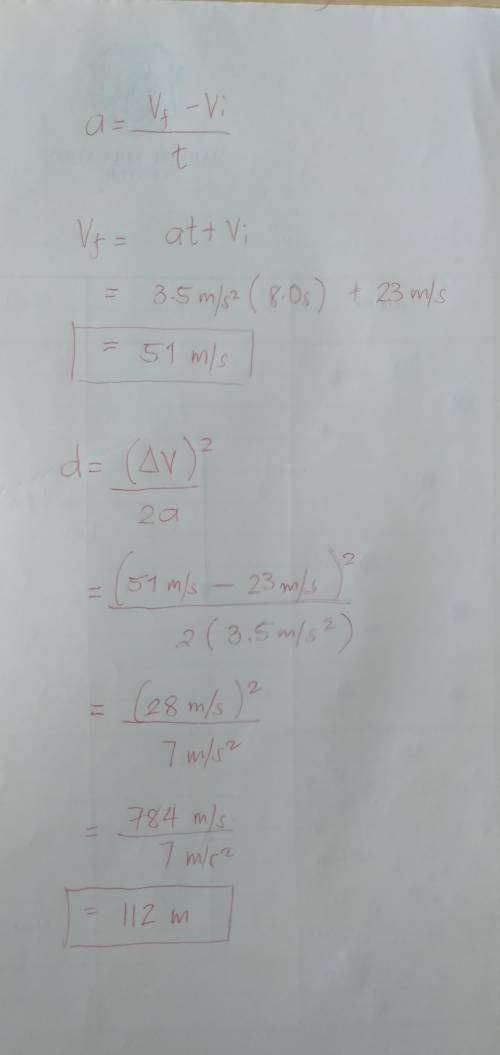
Physics, 24.01.2020 10:31, devaughnnorthcu8221
Acar is traveling at an initial velocity of 23m/s. it begins to accelerate at a rate of 3.5 m/s' for
8.0 seconds. how far did it travel during this time and what is the final velocity of the car 8.0 seconds
later?

Answers: 1
Other questions on the subject: Physics

Physics, 22.06.2019 05:00, masie03
Red light strikes a metal surface and electrons are ejected. if violet light is now used with a 10% greater intensity, what will happen to the ejection rate (number of ejected electrons per second) and the maximum energy of the electrons? a) greater ejection rate; same maximum energyb) same ejection rate; greater maximum energyc) greater ejection rate; greater maximum energyd) same ejection rate; same maximum energye) none of the above answers are correct
Answers: 1


Physics, 22.06.2019 13:10, kelonmazon2492
The bar of prob. 5/82 is repeated here. the ends of the 0.4-m bar remain in contact with their re- spective support surfaces. end b has a velocity of 0.5 m/s and an acceleration of 0.3 m/s2 in the di- rections shown. determine the angular accelera- tion of the bar and the acceleration of end a.
Answers: 3

Physics, 22.06.2019 13:30, kuddlebugsmommy
The two stars in a certain binary star system move in circular orbits. the first star, alpha, has an orbital speed of 36 km/s. the second star, beta, has an orbital speed of 12 km/s. the orbital period is 137 d. a) what is the mass of the star alpha? b) what is the mass of the star beta?
Answers: 1
Do you know the correct answer?
Acar is traveling at an initial velocity of 23m/s. it begins to accelerate at a rate of 3.5 m/s' for...
Questions in other subjects:

Mathematics, 05.05.2020 12:54




English, 05.05.2020 12:54

Mathematics, 05.05.2020 12:54

World Languages, 05.05.2020 12:54

English, 05.05.2020 12:54

Law, 05.05.2020 12:54







